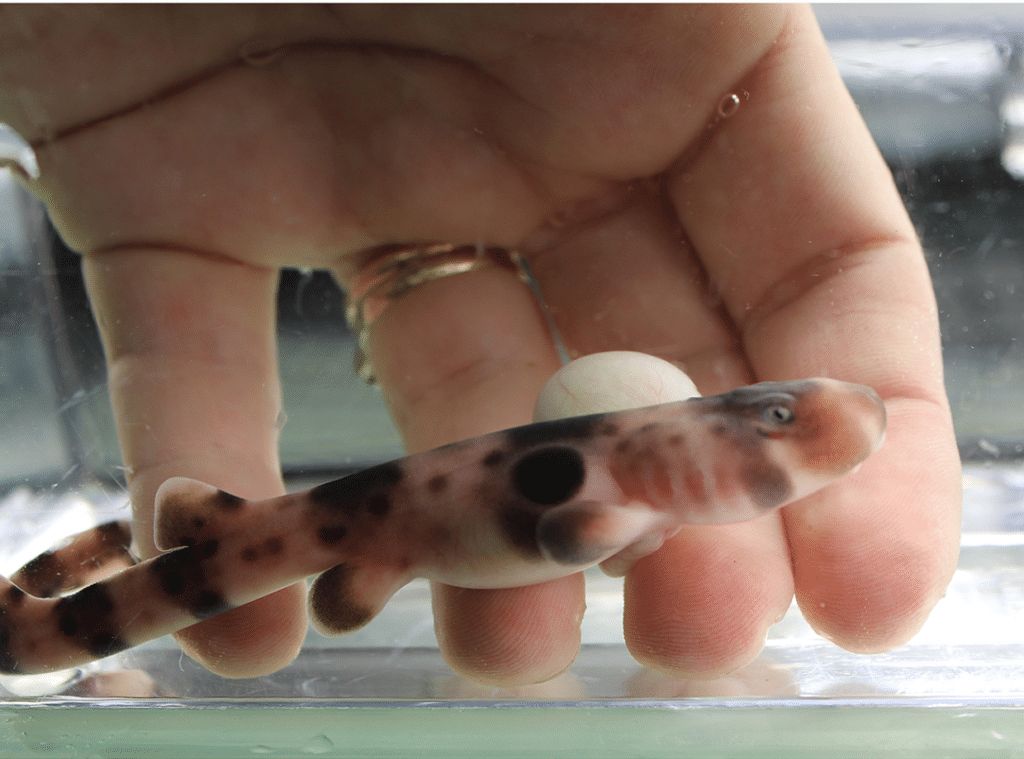From fins to limbs: Monash University scientists reveal how key adaptation occurred enabling emergence of land animal
Embargoed 20 July 2016 at 1800 London time / 1300 US Eastern Time.
Scientists at the Australian Regenerative Medicine Institute (ARMI) at Monash University (Melbourne) have identified an important evolutionary innovation that gave rise to many land animals, from reptiles and birds to mammals, and including our own species.
The work, published in the latest issue of the prestigious British journal, Nature, helps explain how the critical transition from fish fins to animal limbs occurred. This key adaptation was necessary in the evolution of terrestrial animals but has remained poorly understood until now.
To investigate the evolutionary changes that could allow the re fashioning of aquatic fins into limbs suited for use on land, researchers led by the Director of ARMI, Professor Peter Currie, studied fin formation in the small, tropical zebrafish.
“This species is well known for its transparency which permits us to directly image the development from embryo to fish,” he explained. “Using our specialised microscopes, we focused on a particular structure at the site of fin formation, called the apical ectodermal ridge, or AER.”
It has long been known that in both fish and animals the AER occurs at the site of developing fins and limbs – and for this reason it is regarded as a likely determinant of whether fins or limbs form. During embryonic development, the AER produces cell signalling molecules which encourage the outgrowth of both fins and limbs.
“There is a key difference however,” explained Professor Currie. “In fish, the AER is transient, quickly changing into a structure called an apical fin-fold which does not produce growth signals. In animals, the AER persists for a long time, and it continues to release molecules that stimulate the formation of limb skeletons.”
According to a leading theory, this difference in AER timing is a possible means by which the fin-to-limb transition occurred. To investigate this, the research team systematically catalogued the cellular events in zebrafish finfold formation. In doing so, they identified a previously unknown cell type that acts as a key regulator, migrating into and shutting down the AER to induce fin-fold formation. These new cells have been termed AFICs (apical fin inducing cells).
“Importantly, we have also shown that when we deliberately remove AFICs fin folds do not form and tissue growth continues,” noted Professor Currie. “The appearance or lack of these invasive AFICs could therefore provide the AER timing mechanism proposed to be responsible for the fin-to-limb transition.”
This suggestion was supported by a further analysis which indicated that fin-forming AFICs were progressively reduced across evolutionary time – abundant in the pectoral fins of ancient epaulette sharks but reduced in number and activity in the iconic Australian lungfish, a species that appeared just before the emergence of four-limbed (tetrapod) land animals and which has lobed, foot-like fins.
“It appears that the fin-inducing effect of AFICs had to be overcome in order to achieve the fin-tolimb transition,” Professor Currie concluded. “This is one of the most studied areas of biology. It has the potential to solve the great mystery of how the descendants of early fish ventured onto land. This research is the first window into how a developmental process could drive a morphological change to bring about this enigmatic transition.

The fin to limb transition – a two month old epaulette shark hatchling in the hand of the research tech in charge of the shark facility. The shark paired fins are front and center in this image as is the structure into which they have evolved the tetrapod limb/hand.
Contact Information
Professor Peter Currie
Director, ARMI
Phone: + 61 (0)3 9902 9602
Mobile: +61 (0)414 138 005
Email: peter.currie@monash.edu
Mr Silvio Tiziani
Chief Operating Officer, ARMI
Phone: +61 (0)3 9902 9603
Mobile: +61 (0)4 1853 6209
Email: silvio.tiziani@monash.edu
Notes to Editors About ARMI
The Australian Regenerative Medicine Institute (ARMI) is dedicated to unlocking the regenerative capabilities of the human body. ARMI is a medical research centre based at the Clayton Campus of Monash University. Boasting 15 research groups studying a variety of regenerative approaches, ARMI is one of the largest regenerative medicine and stem cell research hubs in the world.
